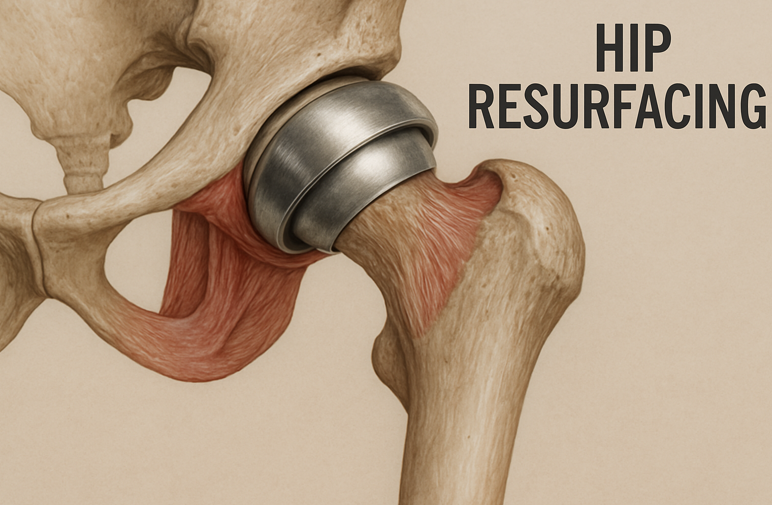If your hip is acting up like a drama queen demanding attention, you’re in good company—and, odds are, you’ve wondered which surgery could put things back in harmony. The orthopaedic headliners: hip resurfacing and hip replacement. Both promise to get you strutting your stuff pain-free, but their approaches are as different as a renovation TV show and a home demolition special.
Step one on your comeback tour? Sorting out what makes each option tick. So, put on your metaphorical sneakers (and maybe grab a walking stick) because we’re about to venture into what truly separates these procedures.
What is Hip Resurfacing?
Hip resurfacing isn’t a full reboot; it’s more like a high-tech touch-up. Forget tossing out the whole joint—instead, your surgeon’s main gig is sanding off the rough spots and slipping on a snug, shiny new metal cover.
Here’s how the magic unfolds: The aptly named femoral head (the “ball” part of your hip’s ball-and-socket joint) gets reshaped and sits snug under a metallic cap. The socket side gets its own metal facelift. Both parts usually feature cobalt-chromium—a material so fancy you’ll want to show it off at airport security.
Recovery from Hip Resurfacing
Expect a 3–6 month reboot period, but resurfacing-veterans often report their refurbed joint feels so normal, they forget there’s metal onboard. Another perk: the big, bold ball design gives you better stability and range—making dance floor trips less likely.
There is a caveat: this hip hack only caters to those with hearty, robust bones—so if you’re more willow shrub than mighty oak, your surgeon may swipe left on this one. Speak to a specialist for more hip resurfacing treatment insights.
What is Hip Replacement?
If your hip has totally checked out (think: refuses to work overtime or even regular hours), hip replacement is the blockbuster solution—also known as total hip arthroplasty (cocktail party trivia unlocked). Here, you get an all-new joint: ball, neck, everything—the whole squad is replaced with a metal or ceramic ball atop a sturdy stem, implanted deep in your femur.
And don’t forget the socket. It’s ousted and replaced with a gleaming metal cup and a liner of your choice. Plastic? Ceramic? Metal? You’ve basically got the sundae bar of orthopaedics, minus the sprinkles.
Material Options and Longevity
Today’s hip replacements are more advanced than a spy gadget. You’ve got ceramic-on-ceramic and ceramic-on-plastic options, so your new parts are built to last and much less likely to sound like a squeaky dog toy at the gym.
Recovery from Hip Replacement
Set aside 3–4 months for your transformation into the Bionic You (though some folks are off to the races by 6–8 weeks—no guarantees on Olympic speed). Physical therapy will become your loyal sidekick, turning tight muscles into flexible superstars.
Some truth, though: your new hip might not feel quite like the old one at first, but when 95% of replacements are running strong for 15–20 years, you’re joining a very exclusive (and limber) club.
Key Differences to Consider
Sorry, but age counts for more than just birthday cake here—your bones’ condition will help decide the best ticket. Hip resurfacing wins popularity points among the younger and bone-sturdy, while hip replacement flings open its doors for candidates of every age and bone quality.
Adrenaline junkie? Hip resurfacing is tailor-made for those eager for more action—think marathon training and competitive pickleball—though both procedures can restore most mortals to an active, music-worthy lifestyle.







